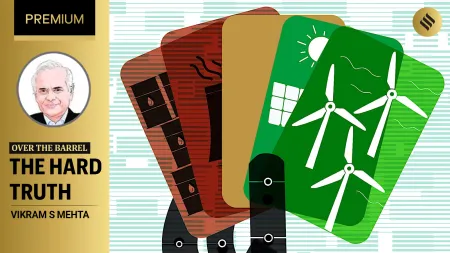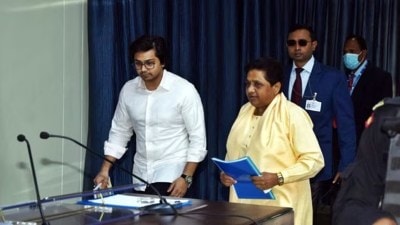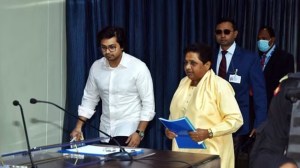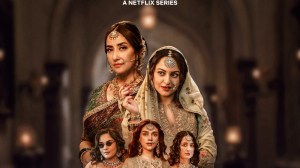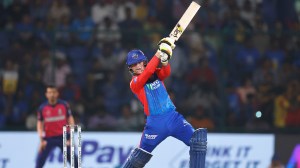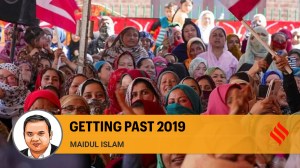- India
- International
Other countries’ view of India is influenced by calculations and hopes that it can help counter Chinese expansionism in Asia
Today, the international media echo indices of democracy and freedom of expression prepared by institutions like Varieties of Democracy, Freedom House, and Reporters without Borders which are often comparing the evolution of India’s regime to the Emergency.
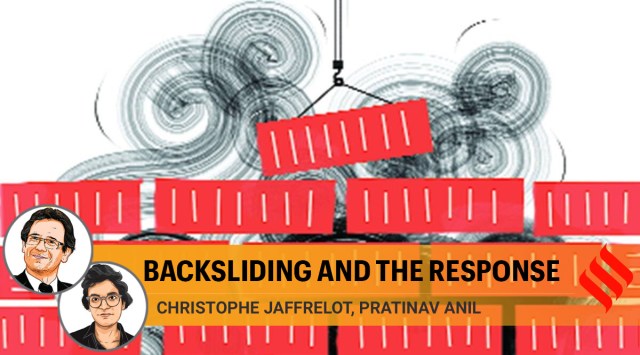 Illustration: CR Sasikumar
Illustration: CR SasikumarResearching our book on the Emergency, India’s First Dictatorship (HarperCollins, 2021), we found that the change in regime did not change the way Western democracies perceived New Delhi. Trade was one reason why they looked the other way. India bought Jaguar fighters from the UK, and the two countries set up the Indo-British Economic Committee in January 1976; the trade talks that took place in London in April were well attended, and not only by arms dealers. British support for the Indian government, moreover, was bipartisan, from Labour Left to Tory Right, as Rudra Chaudhuri shows in “Re-reading the Indian Emergency”. Michael Foot suggested that it was a “monstrous lie” that Mrs Gandhi “wanted to be a dictator”. Margaret Thatcher believed the Emergency served the Indians well in “tackling problems like world recession and inflation”. The FCO concurred: “An authoritarian regime is better equipped than a democracy to force through the reforms which are needed to make India less of a burden on the world.” Following this logic, in 1976, the Overseas Development Ministry increased aid to India by over 30 per cent.
Britain was not the only European country doing business with India during the Emergency. Jacques Chirac, the French prime minister, paid an official visit in 1976, praising the regime. And in exchange for the purchase of Dutch manufactures, which included drilling equipment, barges, and fertilisers to the tune of fl. 450 million, India secured a fl. 50 million increase in aid — a third more than the “normal commitment” — and a number of debt-relief measures from the Netherlands.
International organisations, too, supported Mrs Gandhi’s regime. The World Bank was impressed by her handling of industrial relations, which worked dramatically to the detriment of Indian workers. As a reward, in 1975–6, donor nations lavished the country with Rs 9.39 billion in aid; not since 1967–8 had India witnessed such levels of foreign assistance. And in May 1976, the Aid-India Consortium made available $1.7 billion.
The reaction of governments and international organisations was one thing, of the press and civil society another. In March 1976, writing in The New York Times, 80 Americans, including Nobel laureates, historians, political scientists, newspapermen, and popular writers, excoriated Mrs Gandhi for suspending fundamental rights. Across the Atlantic, the London Times on India’s Independence Day, August 15, carried a six-column petition deploring the Emergency, signed by a similar number of local MPs, academics, and literary personalities.
In parallel, the Socialist International decided to send a delegation that included West German chancellor Willy Brandt and Irish Labour politician Conor Cruise O’Brien to see Jayaprakash Narayan — Mrs Gandhi denied it permission. Soon after, criticism poured in from the Austrian chancellor Bruno Kreisky and the Swedish prime minister Olof Palme as well. Slowly but surely, criticism from the press and civil society did make governments rethink the Emergency regime.

The US government was quicker than any other in turning against the Emergency regime. In the face of pressure from media freedom watchdogs like the International Press Institute and trade union federations such as the AFL-CIO, officials too switched gears. As early as August 1975, President Ford cancelled a visit to India, saying, “It is really very sad that 600 million people have lost what they have had since the mid-nineteen-forties”.
The press acted as a catalyst. Ramachandra Guha is certainly on to something in his speculation that it was Bernard Levin’s acerbic reporting in the London Times in the last quarter of 1976 that helped convince Mrs Gandhi to call off the Emergency. But the same could be said of the scathing quintet of reports that The Washington Post’s John Saar filed in November after an undercover visit to the country as a businessman.
Today, the international media echo indices of democracy and freedom of expression prepared by institutions like Varieties of Democracy, Freedom House, and Reporters without Borders which are often comparing the evolution of India’s regime to the Emergency. This time, however, international organisations are also vocal. In a 2018 report, E Tendayi Achiume, the UN special rapporteur on Racism, Racial Discrimination, Xenophobia, and Related Intolerance, noted that “the election of the Hindu nationalist Bharatiya Janata Party has been linked to incidents of violence against members of Dalit, Muslim, tribal, and Christian communities. Reports document the use of inflammatory remarks by BJP leaders against minority groups, and the rise of vigilantism targeting Muslims and Dalits”. Since then, UN officials have also expressed concern about the fate of human rights activists, journalists, and demonstrators, who have been arrested protesting the Citizenship Amendment Act and the National Register of Citizens. Michelle Bachelet, the United Nations High Commissioner for Human Rights, declared that the CAA was “fundamentally discriminatory in nature” and invited India to “consider carefully the compatibility of the law with India’s international human rights obligations”. In 2020, she urged the Indian government to “review the Foreign Contribution Regulation Act for its compliance with international human rights standards and to release people charged under the Unlawful Activities Prevention Act for simply exercising basic human rights that India is obligated to protect.”
The Indian government has also earned the censure of another important supranational body, the European Parliament. In January 2020, five EU parliamentary groups, representing 559 members out of 751, issued a strongly-worded resolution condemning the CAA, but India successfully ramped up efforts to counter this move, which remained a dead letter as most member states chose to see the new legislation as an internal matter. US lawmakers inveighed against the CAA too, after hearing witnesses from Amnesty International and other NGOs. In parallel, the US Commission on International Religious Freedom has continued downgrading India in its yearly reports on account of riots and attacks on minorities. Donald Trump, however, never seemed to consider India’s failure to protect religious freedom a particularly thorny issue in his dealings with New Delhi. During his February 2020 visit — at the time of the Delhi riots — he declared that India “has always been admired around the Earth as the place where millions upon millions of Hindus and Muslims and Sikhs and Jains, Buddhists, Christians, and Jews worship side by side in harmony”.
The seemingly tepid response of the West may, again, have something to do with trade relations. But this time around, there are geopolitical concerns too: As part of their Indo-Pacific strategy, NATO countries as well as Japan, Australia and others hope that India can help them counter Chinese expansionism in Asia. The rise of China may, indeed, lead democratic governments to look the other way. Once again, the Western response may turn on what the US decides to do. Whether Biden will follow in Trump’s footsteps or chart a different course only time will tell.
This article first appeared in the print edition on February 20, 2021 under the title ‘Backsliding and the response’. Anil, a Clarendon scholar, is completing his doctorate on Muslim politics in postcolonial India at St John’s College, University of Oxford. Jaffrelot is senior research fellow at CERI-Sciences Po/CNRS, Paris, professor of Indian Politics and Sociology at King’s India Institute, London.
40 Years Ago
EXPRESS OPINION
More Explained
May 07: Latest News
- 01
- 02
- 03
- 04
- 05





